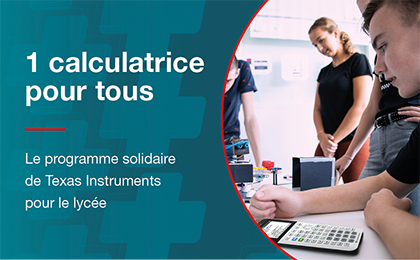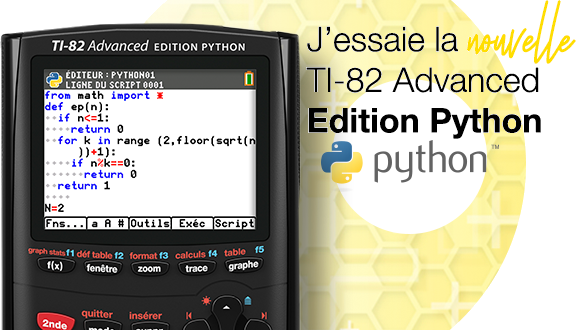Apres, je n'ai pas encore compris comment le changement de slot du bootloader interfere avec le mode examen. D'ailleurs en lisant boot.cpp du bootloader j'ai l'impression que MAXDELTA devrait valoir 4 plutot que 5.
- Code: Select all
6,7d5
< #define MAXDELTA 5 // must be <= 8
<
26,30c24,28
< * - 0[MAXDELTA]: the exam mode is off;
< * - 1[MAXDELTA]: the standard exam mode is activated;
< * - 2[MAXDELTA]: the NoSym exam mode is activated;
< * - 3[MAXDELTA]: the Dutch exam mode is activated;
< * - 4[MAXDELTA]: the NoSymNoText exam mode is activated. */
---
> * - 0[3]: the exam mode is off;
> * - 1[3]: the standard exam mode is activated;
> * - 2[3]: the NoSym exam mode is activated;
> * - 3[3]: the Dutch exam mode is activated;
> * - 4[3]: the NoSymNoText exam mode is activated. */
33,34c31,32
< * flash sector that does not point to 0. If this flash sector does not have
< * enough 1, it is erased (to 1) and significantExamModeAddress
---
> * flash sector that does not point to 0. If this flash sector has only 0s or
> * if it has only one 1, it is erased (to 1) and significantExamModeAddress
39c37
< // if i = 0b00011101, firstOneBitInByte(i) returns 5
---
> // if i = 0b000011101, firstOneBitInByte(i) returns 5
70c68,69
< || (persitence_start_8 + 1 == persitence_end_8 )) {
---
> // we can't toggle from 0[3] to 2[3] when there is only one 1 bit in the whole sector
> || (persitence_start_8 + 1 == persitence_end_8 && *persitence_start_8 == 1)) {
82c81
< uint32_t nbOfZerosBefore = ((readingAddress - (uint8_t *)&_exam_mode_buffer_start) * numberOfBitsInByte) % MAXDELTA;
---
> uint32_t nbOfZerosBefore = ((readingAddress - (uint8_t *)&_exam_mode_buffer_start) * numberOfBitsInByte) % 4;
84,85c83,84
< size_t numberOfLeading0 = (numberOfBitsInByte - numberOfBitsAfterLeadingZeroes(*readingAddress)) % MAXDELTA;
< return (nbOfZerosBefore + numberOfLeading0) % MAXDELTA;
---
> size_t numberOfLeading0 = (numberOfBitsInByte - numberOfBitsAfterLeadingZeroes(*readingAddress)) % 4;
> return (nbOfZerosBefore + numberOfLeading0) % 4;
89c88
< assert(delta >= 1 && delta < MAXDELTA);
---
> assert(delta == 1 || delta == 2 || delta == 3);
95c94
< /* We write in 2 bytes instead of 1, in case there were not enough bits
---
> /* We write in 2 bytes instead of 1, in case there was only one bit
113c112,115
< size_t writtenFlash = *writingAddress <= (1<<(MAXDELTA-1))-1 ? sizeof(uint16_t) : sizeof(uint8_t);
---
> /* As the number of changed bits is capped by 2, if *writingAddress has more
> * than one remaining 1 bit, we know we toggle bits only in the first byte of
> * newValue. We can settle for writing one byte instead of two. */
> size_t writtenFlash = *writingAddress == 1 ? sizeof(uint16_t) : sizeof(uint8_t);
115c117
< assert(writingAddress < (uint8_t *)&_exam_mode_buffer_end - 1 );
---
> assert(writingAddress < (uint8_t *)&_exam_mode_buffer_end - 1 || (writingAddress == (uint8_t *)&_exam_mode_buffer_end - 1 && writtenFlash == 1));
et au complet
- Code: Select all
#include <ion/exam_mode.h>
#include <drivers/config/exam_mode.h>
#include "flash.h"
#include <assert.h>
#define MAXDELTA 5 // must be <= 8
extern "C" {
extern char _exam_mode_buffer_start;
extern char _exam_mode_buffer_end;
}
namespace Ion {
namespace ExamMode {
char ones[Config::ExamModeBufferSize]
__attribute__((section(".exam_mode_buffer")))
__attribute__((used))
= {EXAM_BUFFER_CONTENT};
/* The exam mode is written in flash so that it is resilient to resets.
* We erase the dedicated flash sector (all bits written to 1) and, upon
* deactivating or activating standard, nosym or Dutch exam mode we write one, two or tree
* bits to 0. To determine in which exam mode we are, we count the number of
* leading 0 bits. If it is equal to:
* - 0[MAXDELTA]: the exam mode is off;
* - 1[MAXDELTA]: the standard exam mode is activated;
* - 2[MAXDELTA]: the NoSym exam mode is activated;
* - 3[MAXDELTA]: the Dutch exam mode is activated;
* - 4[MAXDELTA]: the NoSymNoText exam mode is activated. */
/* significantExamModeAddress returns the first uint32_t * in the exam mode
* flash sector that does not point to 0. If this flash sector does not have
* enough 1, it is erased (to 1) and significantExamModeAddress
* returns the start of the sector. */
constexpr static size_t numberOfBitsInByte = 8;
// if i = 0b00011101, firstOneBitInByte(i) returns 5
size_t numberOfBitsAfterLeadingZeroes(int i) {
int minShift = 0;
int maxShift = numberOfBitsInByte;
while (maxShift > minShift+1) {
int shift = (minShift + maxShift)/2;
int shifted = i >> shift;
if (shifted == 0) {
maxShift = shift;
} else {
minShift = shift;
}
}
return maxShift;
}
uint8_t * SignificantExamModeAddress() {
uint32_t * persitence_start_32 = (uint32_t *)&_exam_mode_buffer_start;
uint32_t * persitence_end_32 = (uint32_t *)&_exam_mode_buffer_end;
assert((persitence_end_32 - persitence_start_32) % 4 == 0);
while (persitence_start_32 < persitence_end_32 && *persitence_start_32 == 0x0) {
// Scan by groups of 32 bits to reach first non-zero bit
persitence_start_32++;
}
uint8_t * persitence_start_8 = (uint8_t *)persitence_start_32;
uint8_t * persitence_end_8 = (uint8_t *)persitence_end_32;
while (persitence_start_8 < persitence_end_8 && *persitence_start_8 == 0x0) {
// Scan by groups of 8 bits to reach first non-zero bit
persitence_start_8++;
}
if (persitence_start_8 == persitence_end_8
|| (persitence_start_8 + 1 == persitence_end_8 )) {
assert(Ion::Device::Flash::SectorAtAddress((uint32_t)&_exam_mode_buffer_start) >= 0);
Ion::Device::Flash::EraseSector(Ion::Device::Flash::SectorAtAddress((uint32_t)&_exam_mode_buffer_start));
return (uint8_t *)&_exam_mode_buffer_start;
}
return persitence_start_8;
}
uint8_t FetchExamMode() {
uint8_t * readingAddress = SignificantExamModeAddress();
// Count the number of 0[3] before reading address
uint32_t nbOfZerosBefore = ((readingAddress - (uint8_t *)&_exam_mode_buffer_start) * numberOfBitsInByte) % MAXDELTA;
// Count the number of 0[3] at reading address
size_t numberOfLeading0 = (numberOfBitsInByte - numberOfBitsAfterLeadingZeroes(*readingAddress)) % MAXDELTA;
return (nbOfZerosBefore + numberOfLeading0) % MAXDELTA;
}
void IncrementExamMode(uint8_t delta) {
assert(delta >= 1 && delta < MAXDELTA);
uint8_t * writingAddress = SignificantExamModeAddress();
assert(*writingAddress != 0);
size_t nbOfTargetedOnes = numberOfBitsAfterLeadingZeroes(*writingAddress);
// Compute the new value with delta bits switched to 0.
/* We write in 2 bytes instead of 1, in case there were not enough bits
* left to 1 in writingAddress. */
nbOfTargetedOnes += numberOfBitsInByte;
nbOfTargetedOnes -= delta;
constexpr size_t newValueSize = sizeof(uint16_t)/sizeof(uint8_t);
uint8_t newValue[newValueSize];
if (nbOfTargetedOnes > numberOfBitsInByte) {
size_t nbOfTargetedOnesInFirstByte = nbOfTargetedOnes - numberOfBitsInByte;
assert(nbOfTargetedOnesInFirstByte <= numberOfBitsInByte);
newValue[0] = ((uint16_t)1 << nbOfTargetedOnesInFirstByte) - 1;
newValue[1] = 0xFF;
} else {
assert(nbOfTargetedOnes <= numberOfBitsInByte);
newValue[0] = 0;
newValue[1] = ((uint16_t)1 << nbOfTargetedOnes) - 1;
}
// Write the value in flash
size_t writtenFlash = *writingAddress <= (1<<(MAXDELTA-1))-1 ? sizeof(uint16_t) : sizeof(uint8_t);
/* Avoid writing out of sector */
assert(writingAddress < (uint8_t *)&_exam_mode_buffer_end - 1 );
Ion::Device::Flash::WriteMemory(writingAddress, newValue, writtenFlash);
}
}
}






















